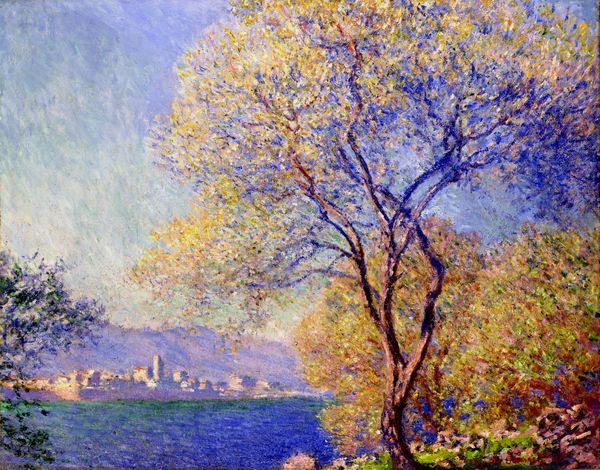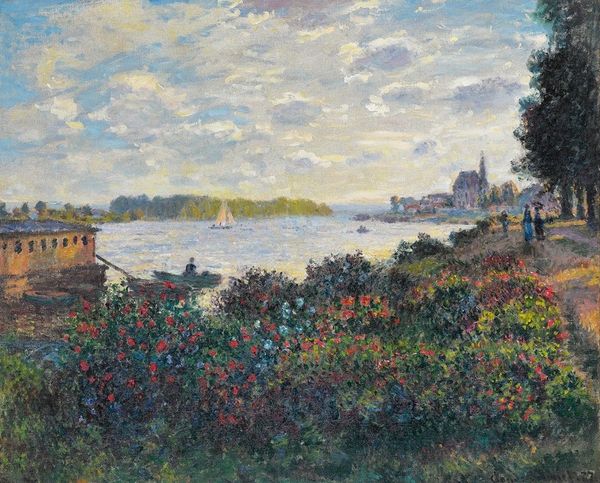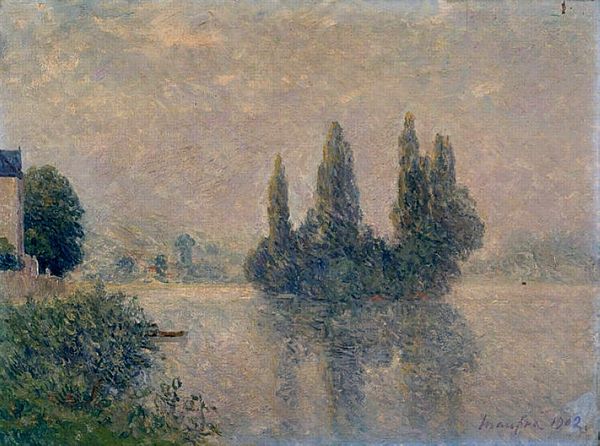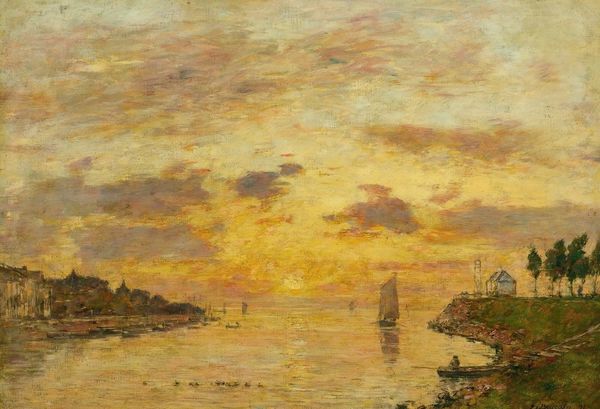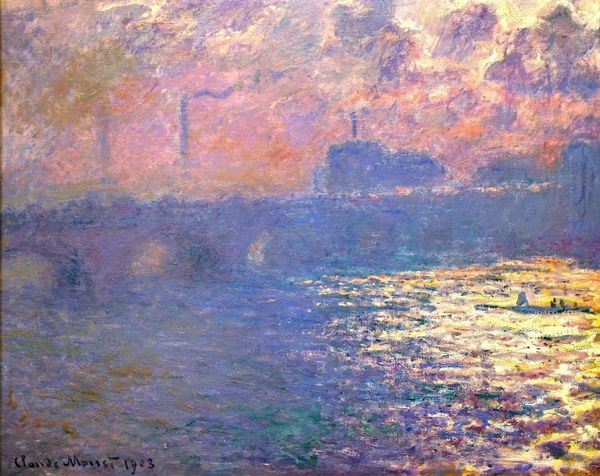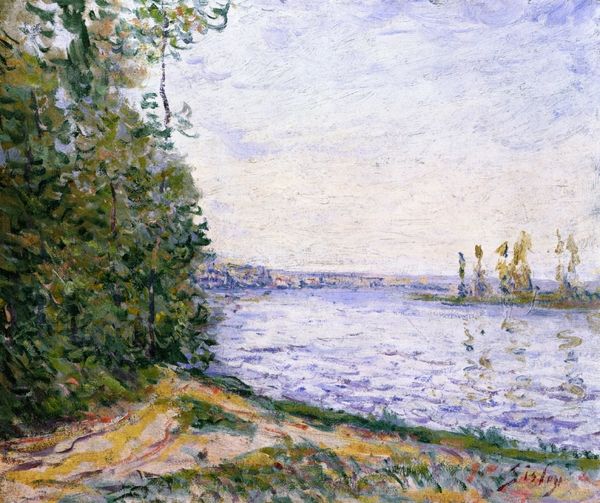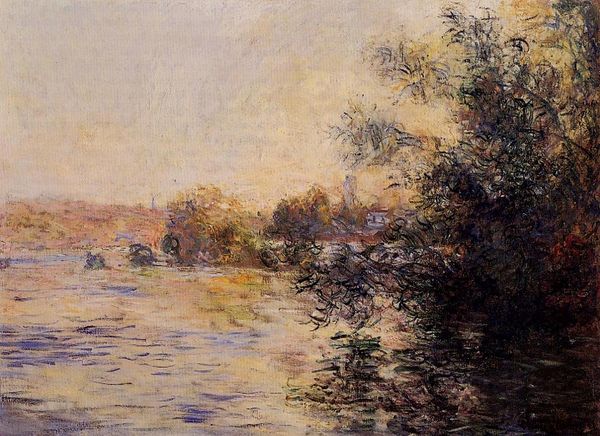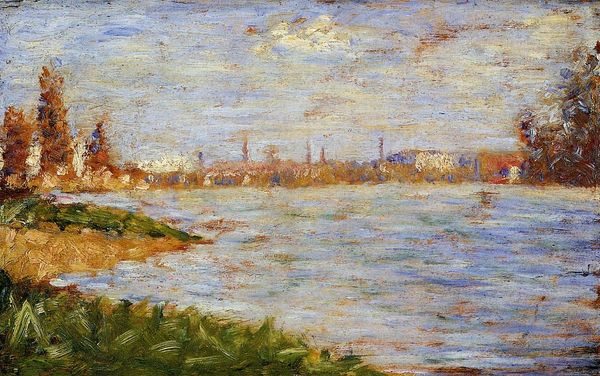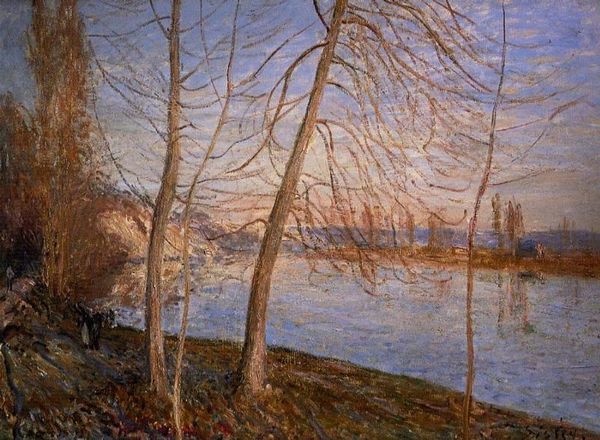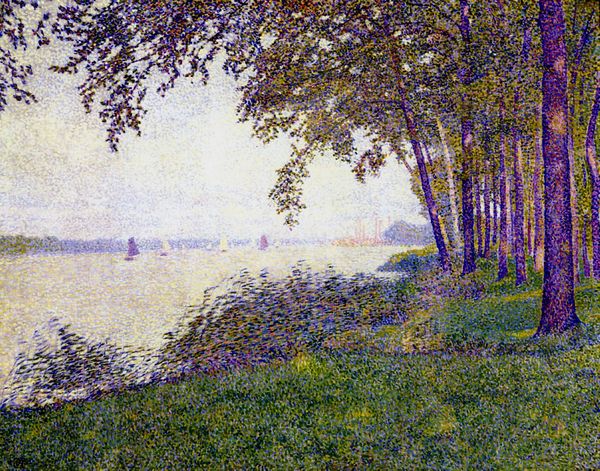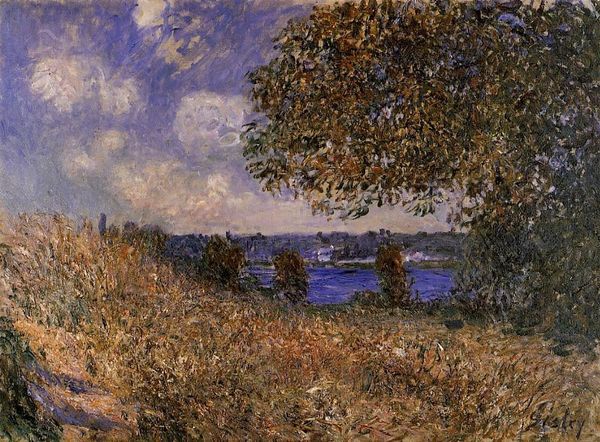
Copyright: Public domain
Curator: Welcome. Here we have Claude Monet's "Antibes Seen from the Salis Gardens", painted in 1888, rendered in oil on canvas, exemplifying his plein-air approach. Editor: My immediate reaction is…serenity. The almost monochromatic blues and gentle pinks evoke a peaceful, dreamlike state. The composition seems delicately balanced despite the seemingly haphazard brushstrokes. Curator: Indeed. The dominant tree in the foreground acts as a visual anchor, its branches perhaps symbolic of reaching out to connect with the spiritual realm or inner growth, a prevalent romantic symbol. It guides the eye towards the hazy cityscape of Antibes. Editor: I see how the tree’s presence structures the composition, leading your eye from foreground to background. But it's the texture that fascinates me, each dab of paint seemingly independent, yet contributing to an overall cohesive form. The semiotics here are less about readily available symbols, and more in how Monet engages light to create visual sensations. Curator: And what about the cultural significance? This was painted during a period of relative stability for Monet. He was exploring the Mediterranean, seeking respite and rejuvenation. Perhaps this landscape becomes a symbol of tranquility and new beginnings, an attempt to capture a slice of paradise. Editor: It's definitely a work of emotional depth. Consider his strategic use of light and shade— it moves almost tonally across the picture surface from right to left creating space. Even in a hazy composition as this. The colors here have almost no natural correlate except the reflection from a calm surface; there are more symbolic cues at play about seeing, memory and feeling in the impression, and its record itself. Curator: An excellent point. The blurring of the boundaries between water and sky contributes to a sense of the infinite, a recurring theme in landscape painting associated with a spiritual longing. And this tree in foreground is so central to his paintings on Antibes, that, beyond Romanticism, the tree itself feels more local, familiar and representative. Editor: That's right. And so with the impression, with the memory and cultural ties: Impressionism provides a sensory, experiential pathway back to ourselves through these paintings. It's the very absence of high resolution imagery that helps give these canvases presence and immediacy! Curator: So, next time we encounter this visual strategy, let’s remember the cultural context that infuses the artwork. Editor: And how Monet uses its compositional elements and structure to heighten a landscape as visual emotion.
Comments
No comments
Be the first to comment and join the conversation on the ultimate creative platform.
